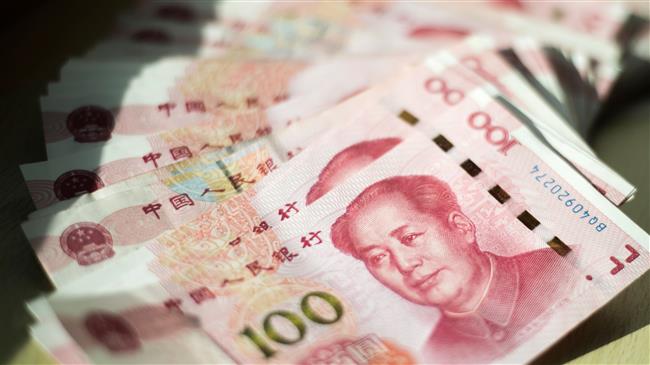US refrains from calling China a currency manipulator
The US government has again decided not to brand China a currency manipulator despite growing trade tensions after President Donald Trump imposed tariffs on Chinese exports to try to reduce the massive US trade deficit with China and contain Beijing’s growing power.
The US Treasury Department said in its semi-annual currency report on Wednesday that a recent depreciation of China’s yuan currency will likely exacerbate the US trade deficit, but US officials found Beijing appeared to be doing little to directly intervene in the currency’s value.
“Of particular concern are China’s lack of currency transparency and the recent weakness in its currency,” said US Treasury Secretary Steven Mnuchin.
The report says that six nations — China, Germany, India, Japan, South Korea and Switzerland — will remain on a watch list subjecting them to added US pressure to lower trade surpluses.
The Treasury said it was monitoring US trading partners for what the Trump administration says are practices that are worsening America’s trade deficit.
Since taking office, Trump has claimed that China’s rise as an exporting powerhouse has hurt US workers and manufacturing and has ordered tariffs on $250 billion in imports from China.
Since the Treasury’s last currency report was issued on April 13, the yuan has fallen by more than 9.0 percent against the US dollar. In the last week, the currency has pushed closer to the key 7 to the dollar threshold, a level not breached since 2008.
Some China experts have speculated that Beijing could use yuan devaluation as a weapon in a broader trade war with the United States.
During the 2016 US presidential campaign, Trump vowed to name China a currency manipulator as soon as he took office. But so far, the administration has passed up four opportunities to do so in a report that the administration is required by law to deliver to Congress every six months.
Instead, the administration has accused Beijing of various trade infractions and imposed billions of dollars of tariffs on Chinese goods coming into the United States. China has retaliated, sparking a trade war between the world’s two biggest economies.
The United States has imposed tariffs on about $250 billion in Chinese goods, and Beijing has responded by targeting about $110 billion in US products.
The Trump administration contends that China is using predatory industrial practices to challenge American technological dominance.
America incurred a goods deficit of $375.9 billion with China last year, the largest imbalance with any nation.
VIDEO | Thousands evacuated in Ethiopia amid earthquakes, volcanic eruption fears
Revealed: Israeli ministers eye restoration of illegal settlements in Gaza through genocide
How Los Angeles’ pistachio tycoons facilitated and profited from wildfires
Iraqi PM: Iran was in Syria to fight terrorism; presence requested by Damascus
Hamas: Israel's massacre in Jenin camp won’t break resistance
60 bodies recovered from abandoned South African gold mine: Police
Biden administration ‘quietly’ circumnavigating own ban on TikTok: Report
Iran Navy takes delivery of first advanced ‘signals-intelligence’ destroyer











 This makes it easy to access the Press TV website
This makes it easy to access the Press TV website